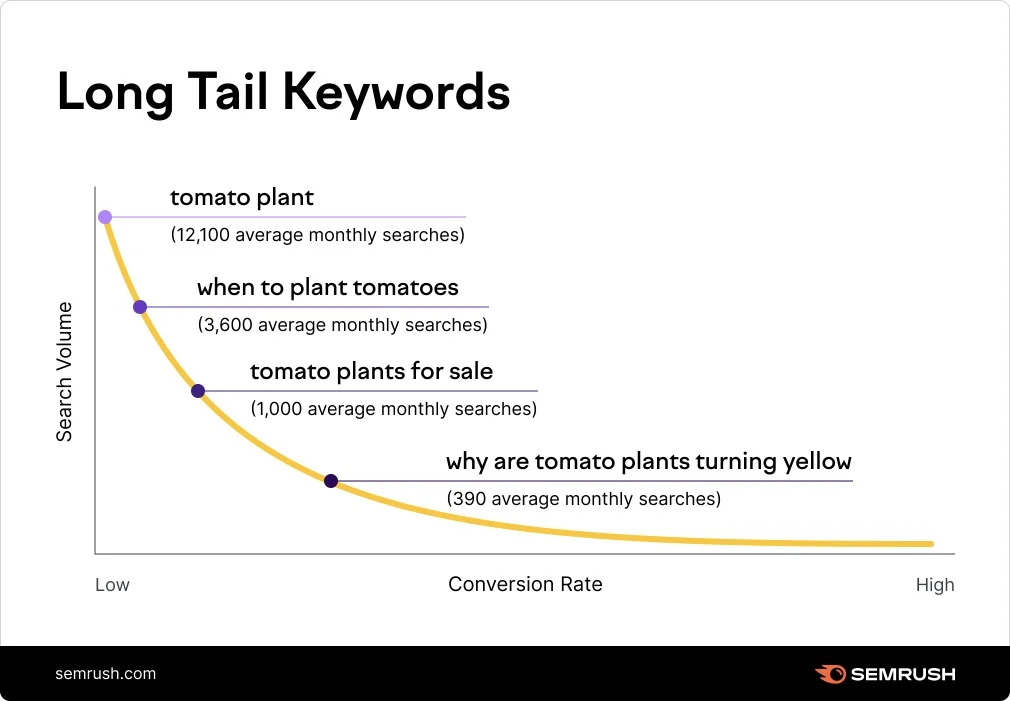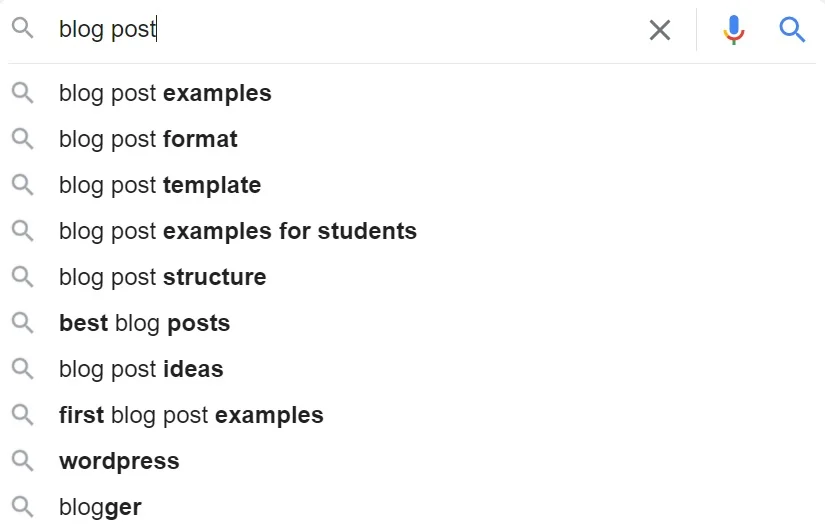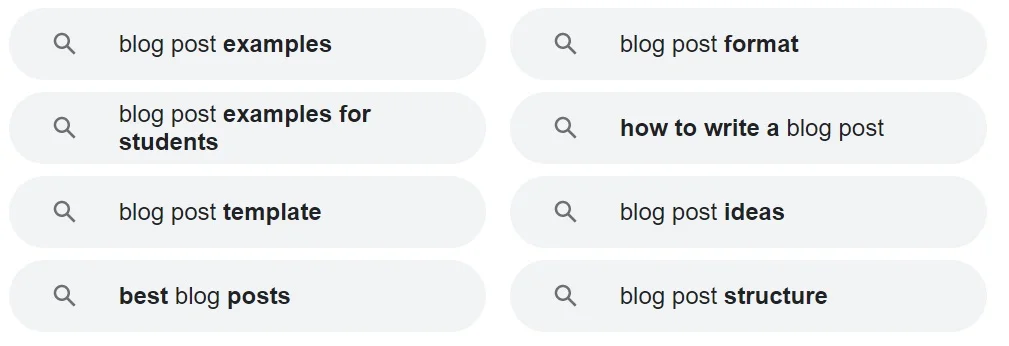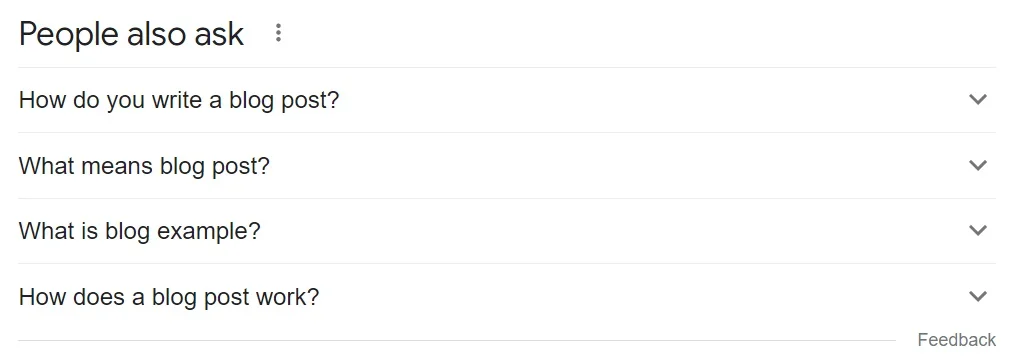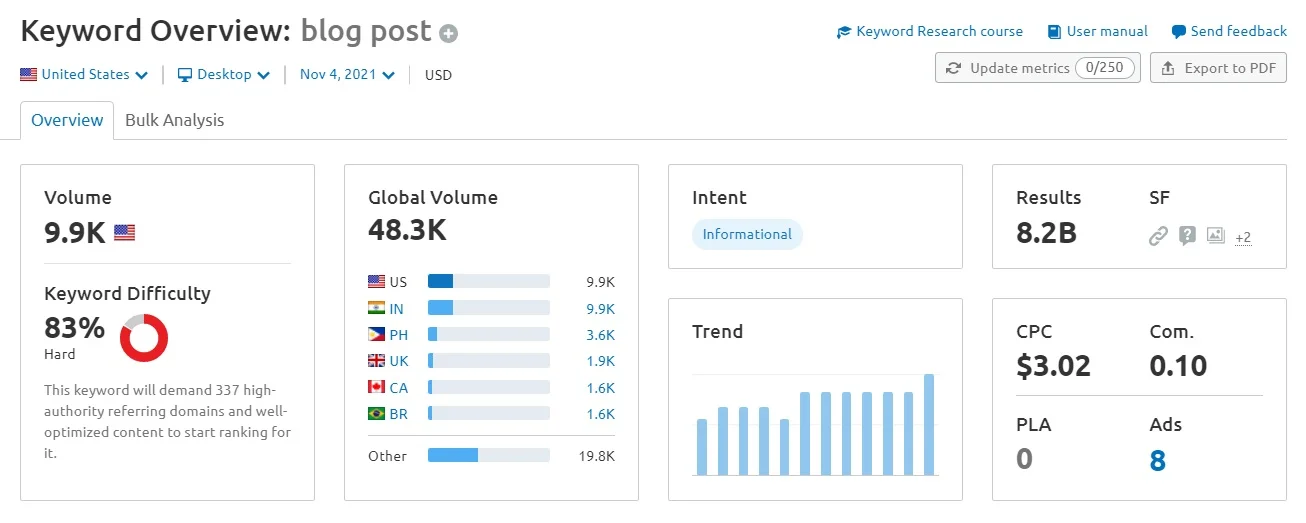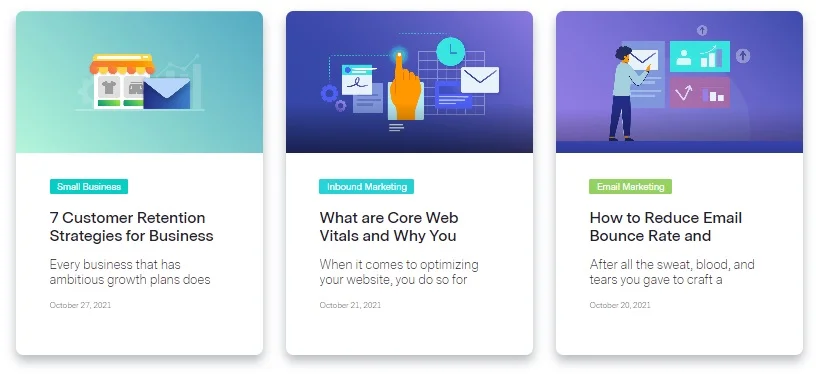Long-Tail Keywords: Definition and How to Leverage Them
February 23, 2022 9 min read

When it comes to finding what you need on the internet, most people just do a simple search. But if you want to get as specific as possible, that’s when long-tail keywords come into play.
There’s a lot to take into consideration when tapping into long-tail keywords and using them for your company’s SEO strategy. Let’s make a deeper dive into the search optimization theory as we explain the perks of long-tail keywords.
What Are Long-tail Keywords?
Long-tail keywords are longer phrases (at least three to five words) that people are more likely to use when searching for a particular piece of information on the internet. Long-tail keywords are usually niche-specific and can accurately address the user’s search intent. They can be especially beneficial when you want to increase your site’s visibility and organic traffic.
Why Are Long-Tail Keywords Essential for SEO?
Long-tail keywords are superior to generic keywords since they can benefit your content far better. And the well-written copy is essential for SEO since it can lead to an increase in traffic, conversions, and ultimately profits. Let’s check in detail how you can enhance your business using long-tail keywords.
The Benefits of Long-Tail Keywords
1. Less Competition
Since long-tail keywords are applied in niche-specific searches, they have a relatively low search volume. Meaning only particular types of people use this exact phrasing to express their search intent. Subsequently, not many businesses use or invest in these exact long-tail keywords in their content or PPC campaigns. When you have close to no rivals and target a specific audience, you are almost guaranteed to see an increase in your organic traffic.
2. Increase in Conversion Rates
The interest in voice search is rising each year. Statistics show that more than 70% of people prefer to talk than to type when they need to find something on the internet. Most of those searches are made using long-tail keywords, as typically, we use longer phrases when searching for something audibly.
For instance, if a person wants to know the latest tv shows, they won’t say “ tv shows 2021”. Instead, they will ask,” what are the best tv shows for 2021” or “ what good tv shows will be out this month?”
You would want to include long-tail keywords in your copy to make it more appealing and relevant. When a customer discovers the answer to their problem on your website, they will likely purchase the proposed solution from you. Thus, long-tail keywords help you increase your site’s conversion rate, turning more visitors into buyers.
How to Find Long-Tail Keywords
Now that we established that the long-tail keywords are a must if you want to increase conversion, it’s time to see where to find those golden phrases. Depending on your SEO budget, you have two options – free and paid tools. Each has its advantages and can help you in your work depending on your goals. The best way to choose the right software for your specific case is to compare the keyword research tools and pick the most suitable one. Let’s look closely at your two options for finding long-tail keywords.
Free Tools for Long-Tail Keyword Research
If you can’t afford to invest in SEO, there are plenty of free alternatives that can bring you relatively good results. Bear in mind the free tools can’t give you those golden, low-competition words that can elevate your copy to the top SERP positions. But over time, you can see a positive change in your organic traffic and conversions. Here are some of the strategies you can try:
Google Suggest (the autocomplete function)
When you start typing your query in the search box, Google will propose different related phrases, trying to guess what you need. These ”guesses” are based on the thousands if not millions of similar searches other users have made before you. And those are your long-tail keywords – the phrases a specific group of people typed to find a particular thing (information, products, services).
Google’s “Related Searches” Section
Located at the bottom of the search results page, this section is similar to the autocomplete function. The difference is that here, you can see a list of the used long-tail keywords.
PAA (People Also Ask)
This is yet another search function Google provides to its users. Here you can see the most commonly asked questions for the specific topic you are researching. In our experience, the most valuable long-tail keywords are hidden in this section.
Quora, Reddit, and other forums – Here, you can precisely find what people are searching for and see their exact phrasing. For example, you might think that specific technical terms best describe your product/service, but people may use a completely different language. Forums and Q&A sites help you find the right long-tail keywords that will resonate with your target audience and attract it to your website.
Regardless of which keyword research method you choose, the best free tool for finding long-tail keywords will be your company’s help desk. You can gather information straight from the source – your customers. Examine their queries and the exact words they use when searching in your support documentation. Use your help desk to detect and analyze the most prominent long-tail keywords of your business sector.
Paid Tools for Long-Tail Keyword Research
Paid tools provide you with additional information and allow you to conduct in-depth research to reveal the ideal long-tail keywords for your specific business niche. Here are some of the reasons why investing in such software is a good idea:
Keyword Research Metrics
You can check if the chosen phrase is a proper match for you by inspecting a ton of different indicators. For example, the keyword difficulty will show you how hard it is to rank on the SERP using a particular word. The keyword volume is another helpful metric that allows you to see how many people use this exact phrasing when searching on Google. Bear in mind that those are not precise numbers. Depending on several factors like the type of crawlers used or database quality, keyword research tools and all SEO tools for that matter can provide you with rough estimates you can use for your starting point.
Competitors Research
All advanced keyword research tools have a “spying” option that helps you discover the keywords your competitors use. This feature will aid you in elevating your content to the next level and attracting more potential customers.
Bulk Keyword Analysis
Why waste time checking word by word when you can do it all at once? Paid tools such as Moz or Ahrefs allow you to import and analyze simultaneously large pieces of data.
Quality Resources
Keyword checkers like those of Semrush or Serpstat have inbuilt instructions and documentation you can use. That is extremely helpful for SEO newbies unfamiliar with the metrics or how to select the ideal long-tail keywords.
How to Leverage Long-tail Keywords
Now that you know what long-tail keywords are, their benefits, and where to find them, it’s time to reveal the best ways to use them.
1. Optimize Your Content
And we mean all of it – from service and product descriptions to meta titles. Read every single line you have on your site and think about how you can make it sound better using the chosen long-tail keywords.
- Headings and Subheadings – This is the first thing Google sees from your webpage. Therefore, you need to showcase how relevant the page is to the user’s query.
- Meta Titles and Meta Descriptions – This is what the user sees displayed on the SERP, so it needs to resonate with their search intent.
- Product/Service Descriptions – Long-tail keywords will make your copy pop and sound more understandable. Use them wisely, and don’t overdo them.
- Always First – The best place for a long-tailed keyword is in your first paragraph, and it’s even better if you can place it in the first sentence.
Remember, search engines are smart and can distinguish when a piece of content is meant for humans and when for bots. Your primary goal must be to properly address your audience’s needs and recognize the intent behind the words. This is why long-tail keywords are so important – you can optimize your content by applying the phrasing your potential customers use, thus appearing more relatable.
When people search using long-tail keywords, they are usually closer to a point-of-purchase. The more specific the phrasing is, the more confident the potential client is in what they want and need. You can leverage this by creating strong sales pitches that will gently push the visitor to become an active buyer.
2. Create Posts Specifically for Your Long-Tail Keywords
Utilizing long-tail keywords can be tricky as they need to sound natural in the text, and sometimes this is just not possible with your existing copy. For example, if you have a small online shopping site, you can’t overstuff the description of your products with strange long phrases. The best way to avoid this difficulty is to develop a blog on your site.
Create blog posts with a particular set of long-tail keywords in mind and tackle a frequently asked question from your business sector. Write about the most discussed issues, using the words your audience uses. Once you implement long-tail keywords in your content strategy, the results will be visible. Forty-one percent of digital marketing specialists believe good copy can provide the “strongest passive link building results.” More quality backlinks will lead to an increase in both organic traffic and conversions.
How to Choose the Right Strategy for Each Long-Tail Keyword
Following the logic of the example from the last point, some long-tail keywords are more suitable for blog posts than to be used in product descriptions or headings. When picking which keywords to put where ask yourself the following questions:
- What do my customers want /search for? We can’t stress enough the importance of search intent. Once you understand your audience’s incentives, you will know how to address them.
- Would a human say it like that? Does it sound like natural language, or is it non-sensical? If you have doubts, don’t use the keyword.
- Does this phrase best characterize the product/service? Be on point and avoid vague descriptions. Although Google is good at understanding semantics, don’t go off-topic.
Long-tail keywords can be a valuable weapon in the arsenal of everybody that wants to enhance their audience reach and convert visitors into buyers. These phrases can make or break a business. If you want to be in the former category, it is time to start optimizing your content, and make sure you track results to improve your efforts.
Author Bio
Iskra is a passionate online marketing consultant who believes in quality, not quantity. She enjoys sharing her knowledge and experience from working with customers from the USA, Australia, and the UK for the last nine years. Her main areas of interest are online marketing, human behavior, psychology, and positive mindset.



